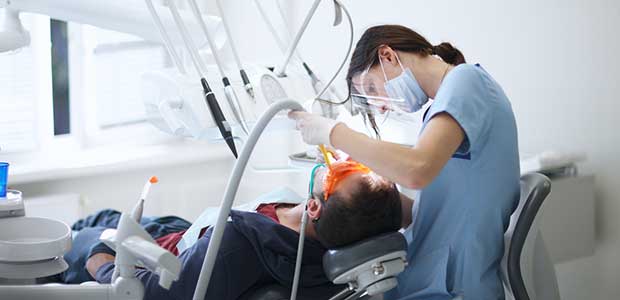
What Dental Care Will Mean During and Post-Pandemic
After dentist offices were forced to close for nearly two months, they are finally able to reopen—but many are taking new and extensive precautions to protect against COVID-19 including better air filtration and more PPE.
At the start of the coronavirus pandemic, dentist offices around the country were asked to close down. As it turns out, dental care was not seen as an “essential” business, and may offices were forced to furlough most of their employees. From mid-March until the end of May, dentist offices were closed—but many did not think this was the right move, explains one New York Times article.
Many dentists and orthodontists will tell you that a “non-urgent” dental patient can quickly become an “urgent” patient:
“Every stage of dental care has a level of urgency. Problems that were put off can flare up. If patients are in pain, it’s already too late. Yet while podiatry offices were allowed to remain open, people were told it’s OK not to see the dentist right now,” said Dr. Edward Lee, a general dentist.
While dentists and orthodontists could talk to patients about some issues over the phone and telehealth services, many other patients who needed a cavity filled or had a root canal had a much harder time getting the problem treated. If a tooth or mouth issue goes unchecked for two months, that can cause some serious problems.
Gum infections cause body-wide inflammation that raises the risk of developing heart disease and diabetes, both of which in turn increase the risk of acquiring a life-threatening coronavirus infection. In fact, inflammation is a risk factor for developing COVID-19, explains the article.
After dentist offices were allowed to reopen in late May, offices were faced with an equally difficult situation: how to reopen, and see patients, while being safe and careful during the pandemic. It’s clear the risk of infection from the coronavirus is still very real.
Dental care already has inherent risk associated with it—and employers are more likely to contract an infection than do patients. Employers are working in people’s mouths and using power tools that can spray a person’s coronavirus-carrying saliva.
One dentist office in New York, for example, has really ramped up its additional protective measures in their office.
“We always did a lot with respect to personal protective equipment and keeping the office clean, and now we’re tweaking what we already did to be even safer,” Dr. Lee said.
For example, after every patient, all surfaces in the treatment room are wiped down with a virus-killing-chemical. To clean instruments, a top-of-the line autoclave is used that first sucks all the air and liquid out of instruments, then sterilizes them with high heat and pressure before drying them completely to minimize the risk of recontamination.
The New York office has also installed HEPA filtration to keep the air cleansed and moving. The dentists are now also using a special device to control aerosols that are unavoidable during dental procedures. The dental hygienists now wear face shields when cleaning teeth, as will the dentists under certain circumstances. All employees wear masks, gloves and gowns, and at the end of the workday, these are left at the office and cleaned.
The Centers for Disease Control (CDC) has issued updated guidance for dental care facilities with consideration of the coronavirus pandemic.
It is important to remember that there is no research that proves a previous infection of coronavirus gives a person immunity. In fact, there have been some cases of individuals getting it twice. “It is not yet known how many antibodies are needed to prevent it, how potent the antibodies have to be or how long their protection may last,” explains the Times article.
In the midst of this still very real pandemic, dentist offices that already mitigate the risk of infection have had to ramp up their precautions for the safety of their employees and patients.